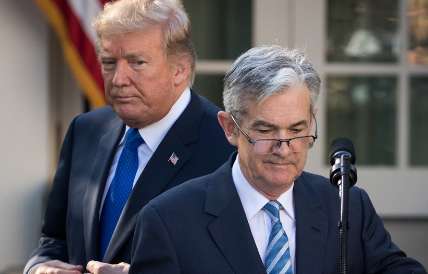Even A 'Shadow Chair' Won't Grant Trump His Desired Monetary Policy Shift, Says Morgan Stanley
The "Shadow Chair" may not immediately alter the course of U.S. monetary policy as some expect, despite recent explicit calls from former President Trump for further rate cuts, which have intensified

The "Shadow Chair" may not immediately alter the course of U.S. monetary policy as some expect, despite recent explicit calls from former President Trump for further rate cuts, which have intensified market focus on Powell's potential successor.
Morgan Stanley's latest analysis suggests that even if the White House appoints a "shadow chair" to the Federal Reserve Board before Chair Powell's term ends, the Fed's policy reaction function is unlikely to change materially in the near term due to the internal dynamics of the Federal Open Market Committee (FOMC) and institutional inertia.
Seth Carpenter, Morgan Stanley's chief economist, argues that while discussions about a "shadow chair" are nuanced, their significance remains secondary. Market pricing also reflects low expectations for a dramatic policy shift. For the bank's Fed forecasts, the greater risk currently stems from the economic outlook itself rather than leadership changes.
Committee Dynamics Limit Sharp Policy Turns
Speculation about Powell's future is intensifying. Trump has repeatedly voiced his desire for deeper Fed rate cuts, amplifying scrutiny over who might succeed Powell. Some believe a new chair could be announced as early as late summer, entering the FOMC by filling a vacant board seat and effectively becoming a "shadow chair."
Yet, despite heated political debate, financial markets have not priced in a radically different policy outlook. Current market expectations point to a policy rate just slightly above 3% by the end of next year, suggesting investors do not anticipate a sharp pivot after Powell's term expires in May.
Morgan Stanley argues that even with a new chair, the Fed's policy path would not shift overnight. The key constraint lies in the FOMC's collective decision-making structure. Monetary policy is determined by the votes of all committee members, and while the chair wields significant influence, they cannot unilaterally push through decisions that deviate sharply from the consensus.
Thus, even if a potential successor is appointed as a board member and joins the FOMC early, the existing policy framework is expected to persist.
"Shadow Chair" Unlikely to Shift Market Pricing Logic
Analysts note that market pricing largely reflects historical precedent. Political appointees have often moderated their prior stances upon taking office, aligning instead with the Fed's statutory mandates of maximum employment and price stability. As a result, even if a strongly opinionated "shadow chair" enters the FOMC, markets may remain cautiously watchful.
This does not mean the chair selection is irrelevant. Over the long term, the chair holds substantial influence over monetary policy direction.
Carpenter explains that, over time, the chair can reshape the committee's composition by nominating new board members. Even regional Fed presidents—whose appointments require board approval—fall under the chair's indirect influence. Thus, while the policy function may see little short-term change, the range of potential long-term outcomes widens significantly.
The report also highlights notable institutional nuances. For instance, Powell's term as a Fed governor does not expire when his chairmanship ends. Theoretically, he could remain on the board, much like former Vice Chair for Supervision Michael Barr did after stepping down from leadership.
Additionally, a more technical detail is that the FOMC chairmanship being held by the Fed board chair is a tradition, not law. While the likelihood of a separation is minimal—especially for an institution steeped in orthodoxy—these procedural quirks add dimensions to future speculation. Morgan Stanley stresses, however, that these remain purely "thought experiments" for now.
Disclaimer: The views in this article are from the original Creator and do not represent the views or position of Hawk Insight. The content of the article is for reference, communication and learning only, and does not constitute investment advice. If it involves copyright issues, please contact us for deletion.